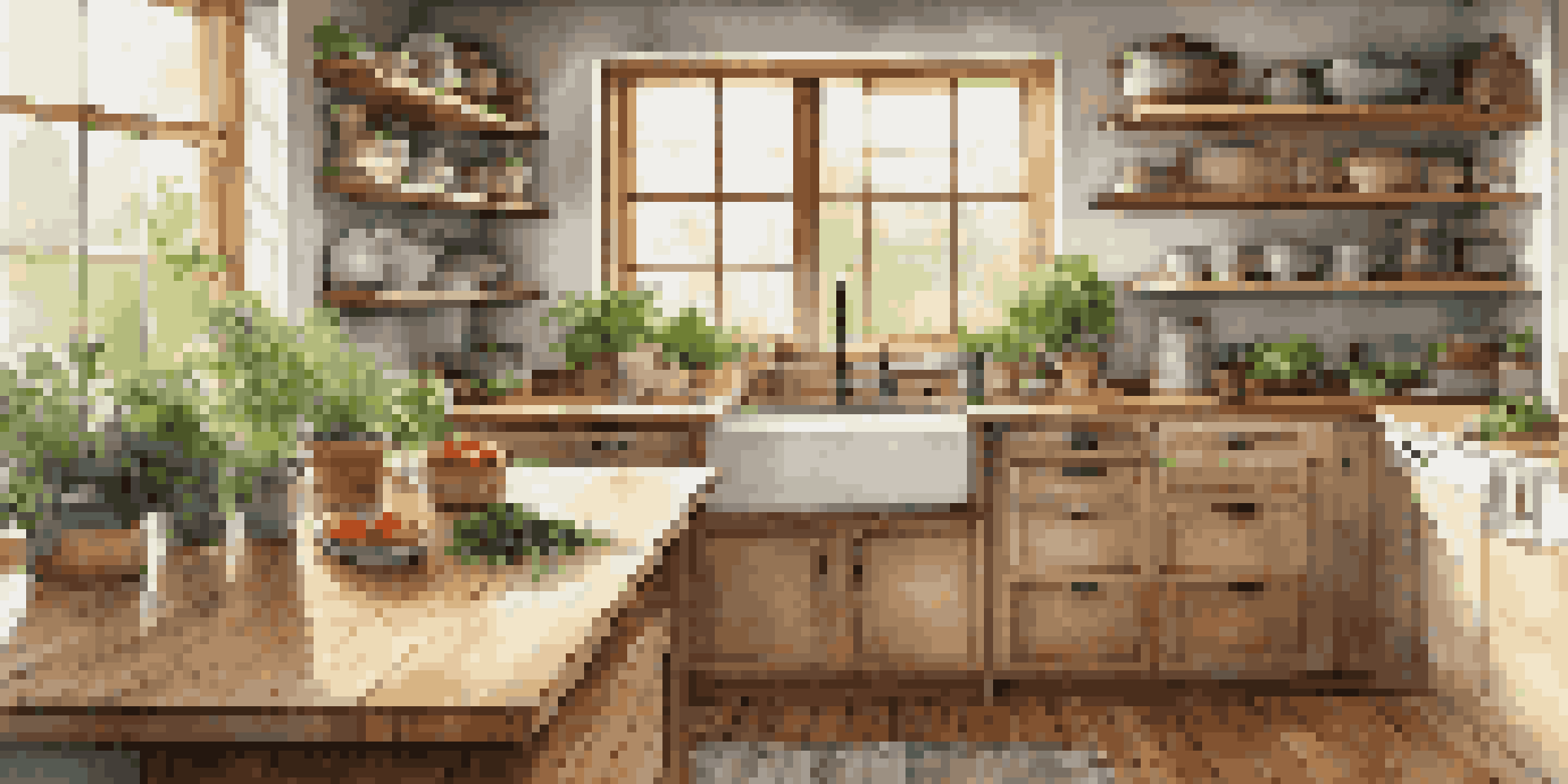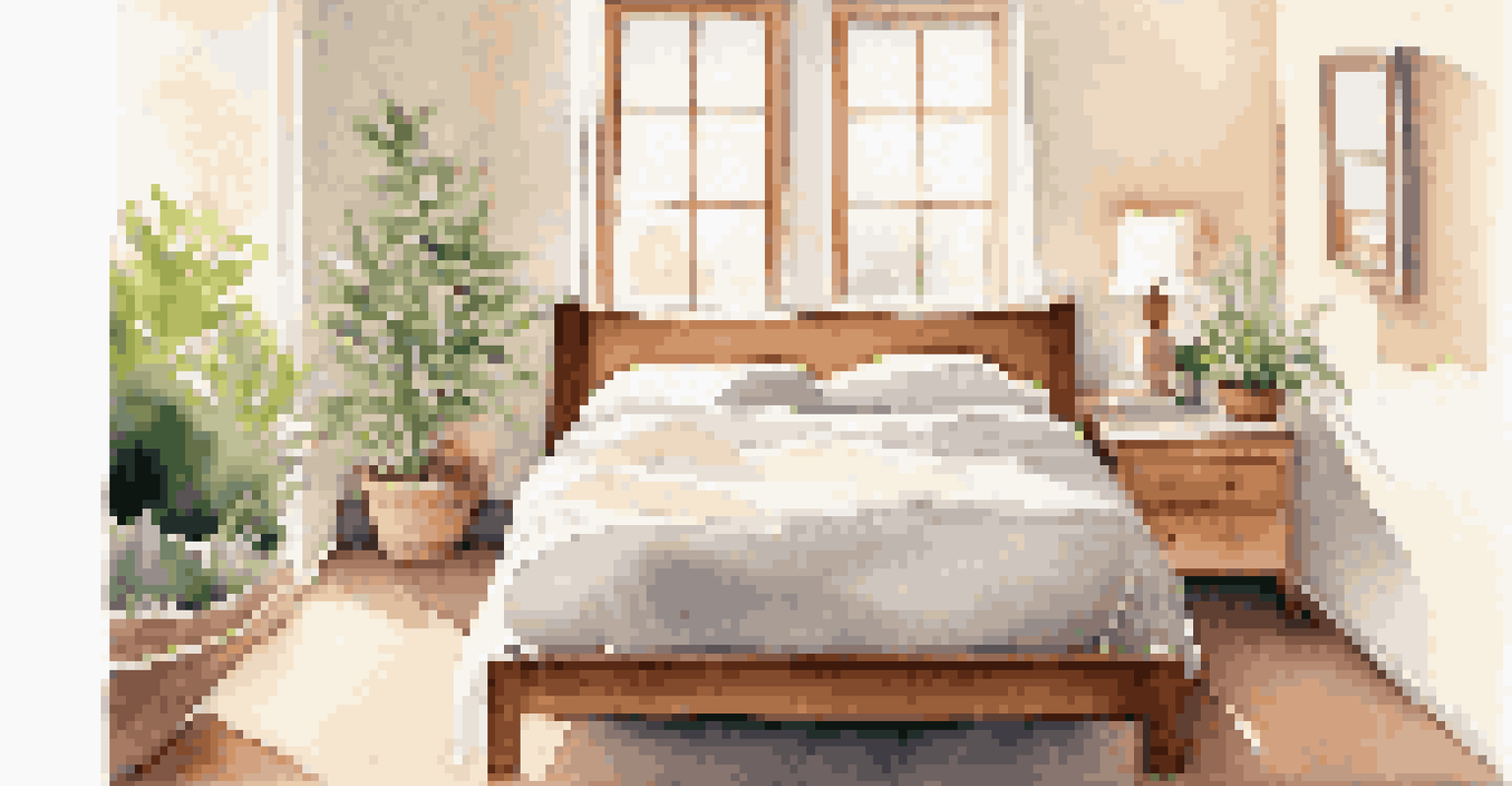Reducing Environmental Stressors: Tips for a Healthier Home

Understanding Environmental Stressors in Your Home
Environmental stressors are factors in your surroundings that can negatively impact your health and well-being. They can range from air quality issues to excessive noise, and even clutter. Understanding what these stressors are is the first step toward reducing their impact on your life.
The greatest threat to our planet is the belief that someone else will save it.
For instance, common indoor pollutants include volatile organic compounds (VOCs) emitted from household products, which can lead to respiratory problems. Similarly, noise from outside can disrupt your peace and affect your sleep quality. Recognizing these stressors helps you identify where to focus your efforts for improvement.
By being aware of these factors, you can create a more peaceful atmosphere in your home. This awareness leads to actionable steps that can significantly enhance your living environment, making it a healthier space for you and your family.
Improving Indoor Air Quality with Simple Changes
Indoor air quality is often worse than outdoor air quality, making it crucial to address. One effective way to improve it is by incorporating houseplants into your decor. Plants like snake plants and peace lilies can naturally filter toxins from the air, providing a breath of fresh life in your home.

Additionally, regularly ventilating your space can significantly reduce indoor pollutants. Simply opening windows for a few minutes each day can replace stale air with fresh air from outside. This simple act not only enhances air quality but also uplifts your mood.
Identify Home Stressors
Recognizing environmental stressors like air quality, noise, and clutter is essential for creating a healthier home.
Remember, improving air quality doesn’t have to be complicated. By making small changes, like adding plants and increasing ventilation, you can create a fresher, healthier environment that benefits everyone in your home.
Reducing Noise Pollution for a Peaceful Space
Noise pollution can be a significant stressor, but there are various ways to minimize it. Consider using soundproofing materials like acoustic panels or heavy curtains to absorb sound and create a quieter atmosphere. This is especially beneficial if you live in a busy area or have noisy neighbors.
Your home should be a reflection of who you are, and if you are cluttered or chaotic, that will reflect in your space.
Another effective strategy is to arrange your furniture to create natural sound barriers. For example, placing bookshelves against walls that face busy streets can help muffle outside noise. Additionally, incorporating soft furnishings like rugs can further dampen sound, creating a more serene environment.
By tackling noise pollution, you’ll not only improve your comfort but also enhance your overall well-being. A peaceful space allows for better concentration, relaxation, and sleep, making your home a true sanctuary.
Decluttering: Creating a Calmer Home Environment
Clutter can be a significant source of stress, both visually and mentally. Taking the time to declutter your space can lead to a more serene and organized home. Start by tackling one room at a time, sorting through items, and deciding what to keep, donate, or discard.
Consider implementing a 'one in, one out' rule: for every new item you bring into your home, let go of an old one. This helps maintain balance and prevents clutter from building up again. Remember, a tidy space can promote clarity of mind and reduce feelings of anxiety.
Enhance Air Quality Easily
Simple changes, such as adding houseplants and improving ventilation, can significantly boost indoor air quality.
In addition, creating designated spaces for items can help keep your home organized. By ensuring everything has a home, you can quickly restore order, making your living space feel more calm and inviting.
Choosing Non-Toxic Materials for Your Home
The materials you use in your home can significantly impact your health. Opting for non-toxic paints, furniture, and cleaning products can help reduce harmful chemical exposure. Look for items labeled as low-VOC or free from harmful substances to ensure a healthier environment.
For instance, when renovating, consider using natural materials like bamboo or reclaimed wood, which are not only sustainable but also less likely to emit harmful chemicals. Additionally, research brands that prioritize safety and sustainability in their products.
Transitioning to non-toxic options may require some initial effort, but the long-term benefits for your health and the environment are invaluable. By making conscious choices, you create a safer haven for yourself and your loved ones.
Creating a Balanced Indoor Environment with Humidity Control
Maintaining the right humidity level in your home is key to preventing mold growth and promoting overall comfort. Ideally, indoor humidity should be between 30% and 50%. You can achieve this by using a dehumidifier in damp areas, like basements, or by using humidifiers in dry spaces during winter months.
Regularly checking for leaks or water damage can also help maintain a balanced environment. Addressing these issues promptly can prevent mold from taking hold, which can pose serious health risks. It's essential to be proactive in keeping your living space mold-free.
Embrace Non-Toxic Materials
Choosing non-toxic materials for your home helps reduce harmful chemical exposure and creates a safer living space.
Implementing these humidity control measures not only protects your home but also fosters a healthier space for your family. A comfortable environment can enhance your mood and well-being, making your home truly inviting.
Incorporating Natural Light for Better Well-Being
Natural light has a profound effect on our mental state, making it crucial to maximize its presence in your home. Consider rearranging furniture to allow sunlight to stream in or adding mirrors to reflect light around the room. This can create a brighter, more uplifting atmosphere.
Additionally, try to keep windows clear of heavy drapes during the day to let in as much light as possible. If privacy is a concern, opt for sheer curtains that allow light to filter through while still providing some coverage. This simple adjustment can significantly enhance the ambiance of your space.

By prioritizing natural light, you not only improve your home's aesthetic but also boost your mood and energy levels. A well-lit environment can lead to increased productivity and a more positive outlook on life.